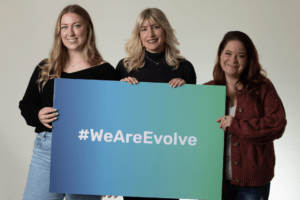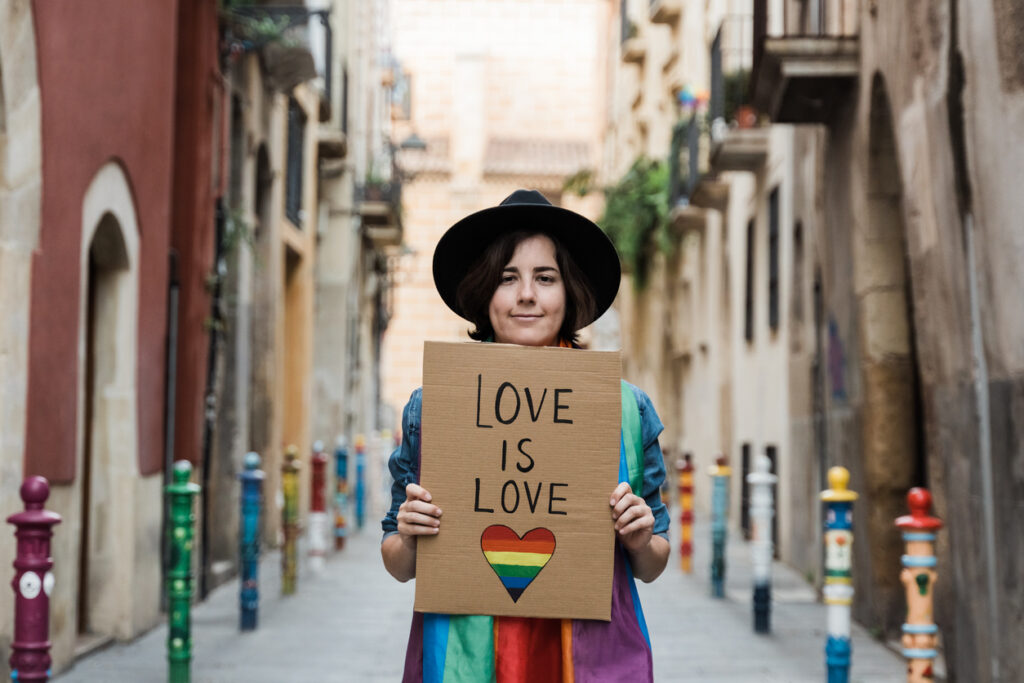Learn the Language to Help Stay Connected to Your Child
[seriesbox]LGBTQ+ and Transgender Teens: Using a Teen’s Chosen Name Reduces Depression and Suicide Risk
I Wish I Were Dead: Why Transgender Teens Present as Suicide Risks and What Parents Can Do
Is Gender-Specific Treatment for Teens Necessary or Does It Exclude LBGTQI+ Teens?[/seriesbox]Parenting any teen is a challenge.
Hold that thought: parenting itself is a challenge.
From birth through infancy, toddlerhood, and school age, you learn how to love and provide for your child the best you can. You know the drill, though. Once you think you have it figured out, your child enters a new developmental phase. Then you have to figure them out all over again. Sometimes it feels like you start from scratch every couple of years.
But you really don’t, because one thing remains constant throughout: the power of your love for your child, manifested in daily life by your commitment to keep them healthy, happy, safe, and thriving.
Then they enter adolescence, and the changes – change. The transformations escalate in scope. During this developmental stage, your child forms an identity separate and distinct from you. They develop a sexuality and a sexual identity of their own and find a peer group that resonates with their new ideas about the world. They arrive at their own conclusions about current events and form opinions on subjects like social issues, art politics, morals, and ethics.
Sometimes you agree with their new views, sometimes you disagree, and sometimes you simply don’t understand what they’re going through – and that’s okay. You can learn. And though you may struggle to relate to the new them, but that’s less important than the fact that sometimes you may struggle to communicate with them. You may be unsure about how to talk about their new views, their new identity, their new ways of expressing themself, and their new ways of experiencing the world.
This article is for parents of LGBTQ + teens who identify with that last paragraph: we want to help you learn to communicate effectively with your teen – and we know you can do it.
Parents: The Words Matter. A Lot.
This is one thing parents of LGBTQ + often miss. But this bears repeating. For almost every LGBTQ + teen, the words their parents use around gender, sexuality, and gender identity are incredibly important. So is the fact that their parents take the time to learn about new concepts that may be unfamiliar to them.
We cannot stress enough how important this is to your teen.
And that’s exactly where the first part of this article will help you.
We’ll give you a basic guide to terminology and concepts you should know and understand. We’ll say it again: you really should learn the words, because the chances are high that these words – and their proper use – are very important to your teen.
That’s the first lesson in this article: we encourage you to respect their language choices, listen carefully to the pronouns they use for themselves and their friends, and then use those language choices and pronouns just like they do.
The terms and concepts may confuse you, but as we say above, that’s okay: you can learn. And we can help. Simply read on and internalize what you discover. The guide to terms will get you up to speed on the language and concepts.
Then, in the second section of this article, we’ll offer a small library of useful articles you can explore to help you learn more about your child, who they are, and how you can love and support them unconditionally exactly as they are now, as adolescents defining who they want to be and how they want to live in the world.
LGBTQ + Teens: Terms and Concepts to Know
We’ll start right at the beginning, with the acronym LGBTQ +.
Do you know what all the letters stand for? Or why there’s a “+” sign at the end?
If you don’t know now, you’ll know when you finish reading the next few paragraphs.
Breaking Down the Acronym LGBTQ +
LGBTQ +
The acronym itself is meant to include all the various groups of people who do not identify with the dominant cultural norms around gender and sexual orientation in our society. When a teen – or anyone, for that matter – says they identify with the LGBTQ + community or as LGBTQ +, what they mean is that their self-concept does not line up with the traditional concept of heterosexuality or the traditional concept of male and female gender identities.
L stands for Lesbian.
Lesbian is the term that describes the attraction of a member of the queer community to a woman. It’s primarily used to define the attraction of a woman to another woman, but it also includes different variations, such as when a non-binary (definition below) person is attracted to a woman. There is no single definition that includes every aspect of lesbianism.
G stands for Gay.
Gay is a term that describes the attraction of an individual towards another individual of the same gender. Most people typically think of this word as it applies to men, but is can also apply to women and non-binary individuals, too. Gay is often used as a term to describe anyone who is not heterosexual, or as a blanket term for anyone who identifies as queer (definition below) or as a member of the LGBTQ + community.
B stands for Bisexual.
Bisexual, often abbreviated as Bi, is a term that describes an individual who is attracted to two or more genders. In some cases, but not all, bisexual means attraction to an individual’s own gender and one different than one’s own. Another thing to understand is that bisexual does not necessarily mean attraction to men and women. A bisexual person may be attracted to a female or a male and a person of nontraditional gender.
T stands for Transgender.
Transgender, often abbreviated as trans, is a term that describes an individual who identifies with a gender other than the gender they were assigned at birth. The most common transgender people are trans men, who were assigned female at birth but live as men, and trans women, who were assigned male at birth but live as women. Transexual is an older term that means essentially the same thing but is not in common use now.
Q stands for Queer.
Queer is a term used to describe an individual whose sexual identity is not heterosexual. People who identify as queer often feel the terms lesbian, gay, or transgender don’t adequately represent them. They may use the term genderqueer to describe their gender orientation and queer to describe their sexuality, or they may use queer to describe both: it varies with the individual. In some cases, the Q stands for an individual who is questioning their sexual or gender identity.
About the “+”
In the acronym LGBTQ +, the “+” refers to any individual or group of individuals who do not identify as heterosexual but also do not directly identify as lesbian, gay, trans, or queer. This includes individuals who identify as omnisexual, asexual, aromantic, polysexual, or non-binary.
Those are the entry-level terms you should know if your teenager identifies as LGBTQ +.
Glossary of Terms
Next, we’ll offer this glossary of terms that you should also know. After the basics – contained in the list above – your LGBTQ + teen will probably use one or more of these terms. If you want to have a conversation with them about their gender expression or sexual identity, we recommend starting with the list above, and moving on to this list next.
Gender
The role a boy, girl, man, or woman manifests in their public life. Gender develops as a function of biological, social, and psychological factors.
Gender Identity
The social category – male, female, or something else – an individual chooses to live. It may or may not correspond to biological, but reflects an individual’s innate sense of who they are and how they want to live.
Gender Expression
How individuals manifest their gender externally, by way of behavior, clothing and appearance, or mannerisms.
Gender Fluidity
The characteristic of embracing different gender identities at different times.
Non-binary
An individual who does not conform to distinct female or male gender expressions. This phrase can also mean a worldview that does not recognize male or female gender expressions as the only two choices available to an individual.
Genderqueer
These individuals have no fixed gender or sexual identity and may switch between or embody different gender/sexual identities at different times.
Agendered
An individual who identifies as having no distinct gender.
Cisgendered
An individual whose assigned gender matches their expressed gender.
Gender Dysphoria
A term used by mental health professionals to describe the range of emotions an individual may experience when they’re in conflict with their assigned gender.
Knowing and understanding these terms will help you communicate with your LGBTQ + teen. Learning them shows them you respect who they are enough to take the time to learn the words and concepts that are important to them as they learn, grow, and discover who they are – their true selves – and endeavor to live an authentic life, where what they believe and know to be true about themselves internally matches how they live externally.
A Library of Useful Articles
Calling Teens by Their Chosen Name Reduces Suicide Risk
Parents of teens often balk at calling their teen by the name they choose when they come out as non-binary or transgender. They may also do this to their teen’s friends. What these parents fail to realize is that this causes emotional pain. It invalidates the individual who came out. It also sends a message that says I don’t respect who you are or how you choose to live. In fact, studies show that calling a transgender teen by their chosen name decreases their risk of suicide.































































